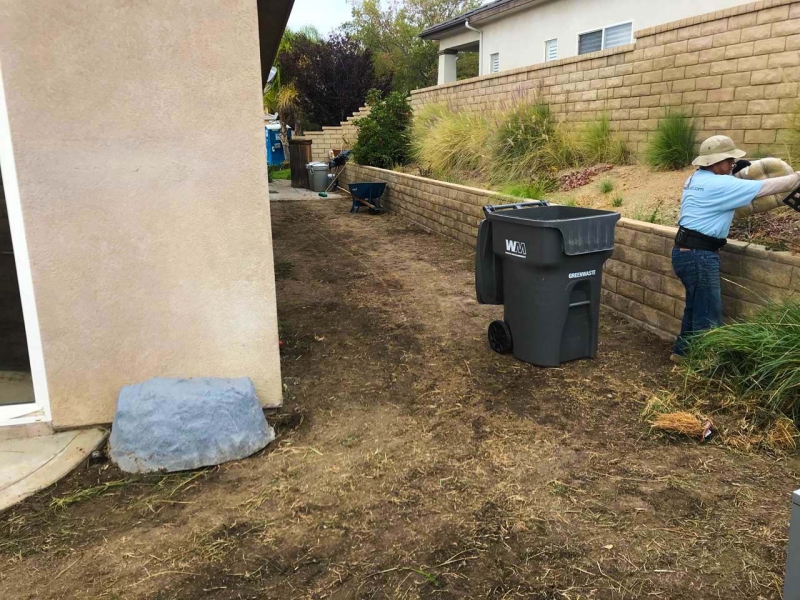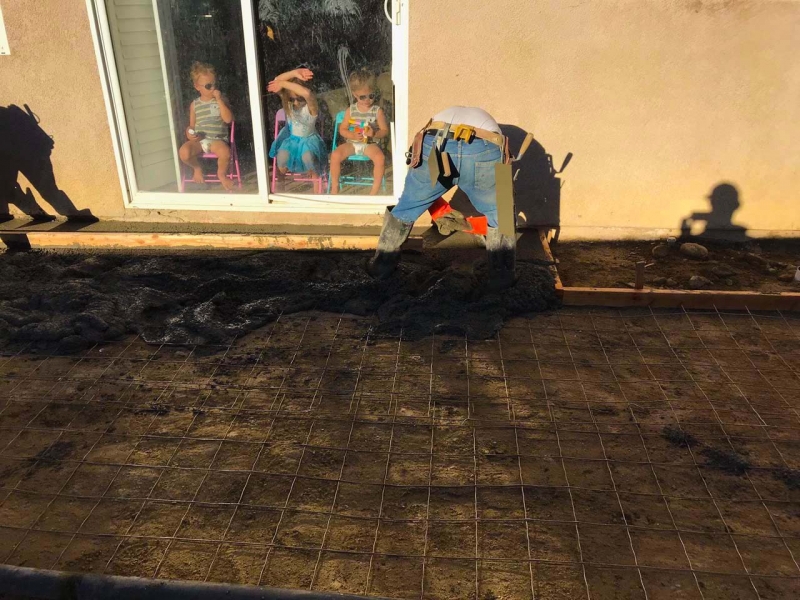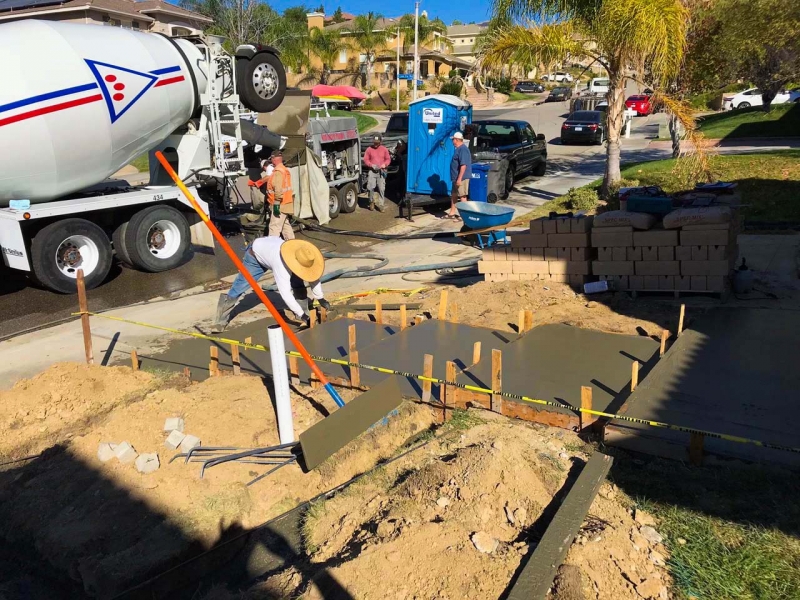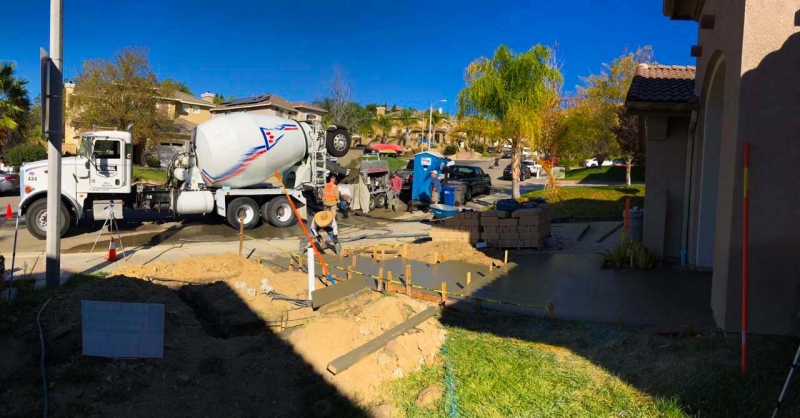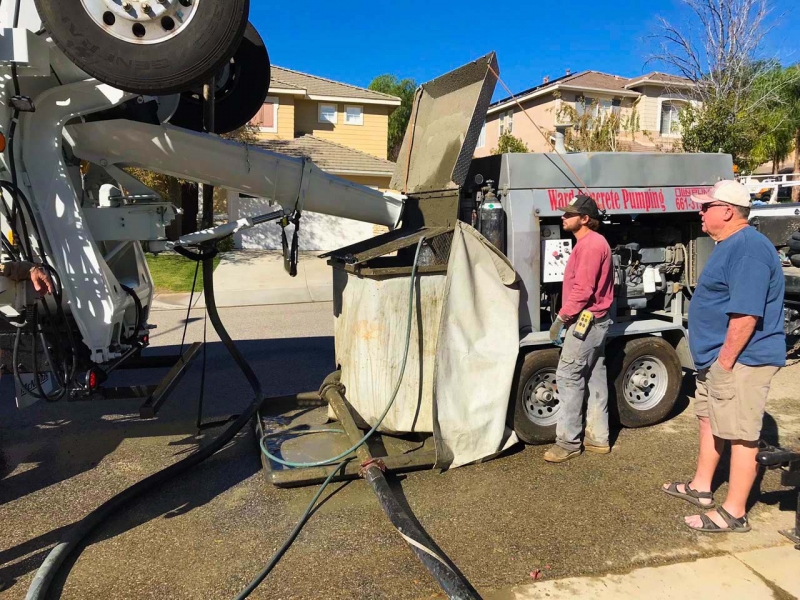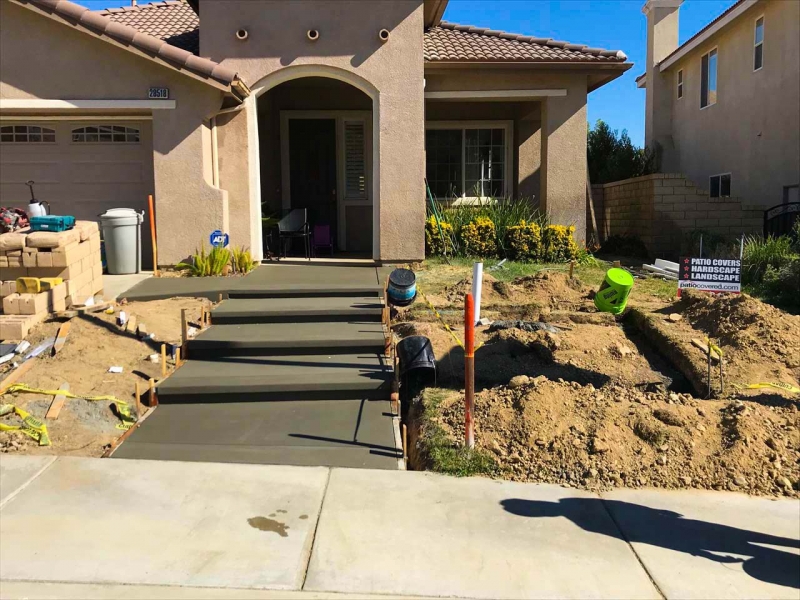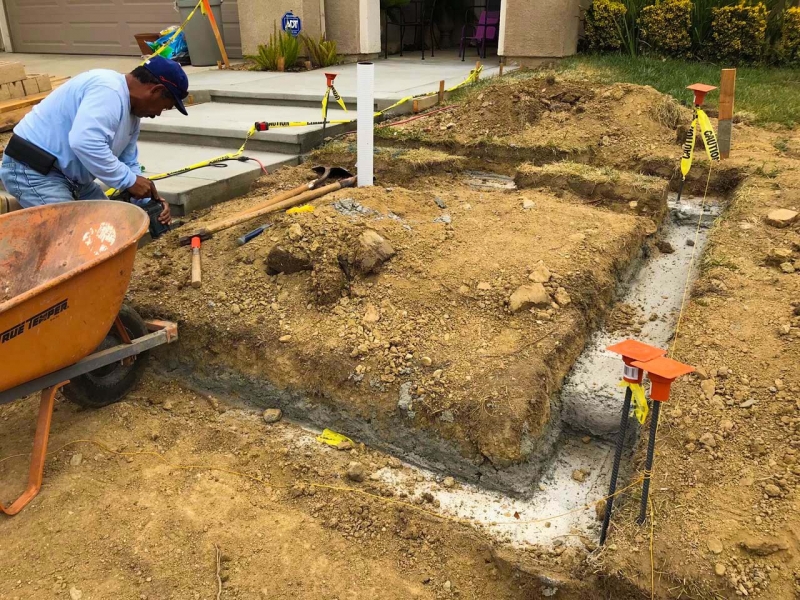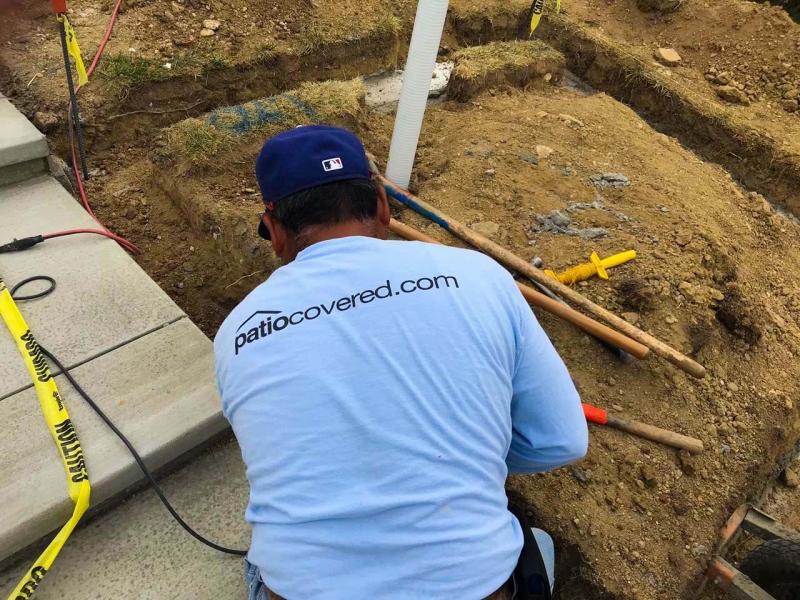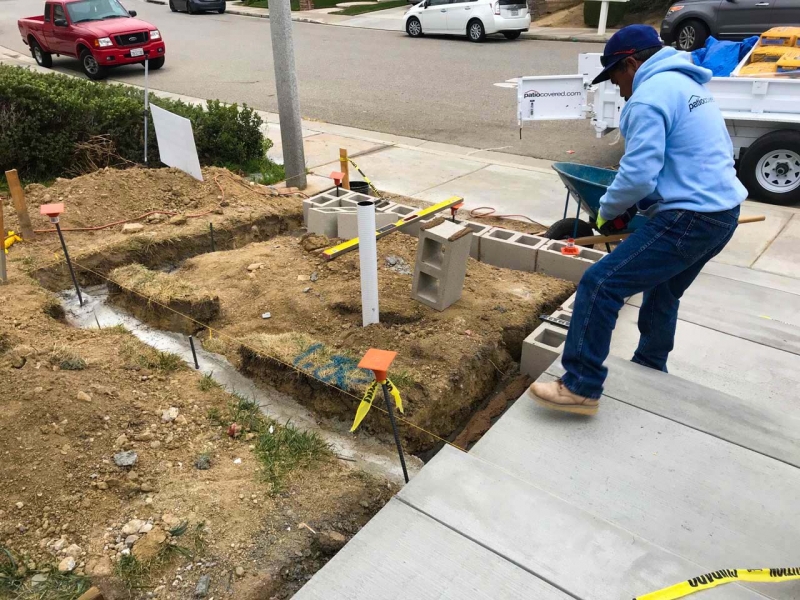Table of Contents
Drought Tolerant Landscaping and Xeriscaping in Santa Clarita
Landscaping
Traditional Landscaping
 While the traditional landscaping approach involves a lot of green grass. Both your front and back yard will be dominated by it, like two verdant lakes in the desert. Along the edges, you have a lot of choices. You can go with small perennials that create the illusion of separation between properties, but make it easy to chat with neighbors. Or you can plant some straight up privacy hedges that act as a literal barrier between properties. Along the house itself, you can opt for bushes, flower beds, strategically placed planters or just let the lawn butt up to the foundation. Or finally, you can up your game with paver stone paths and a covered patio.
While the traditional landscaping approach involves a lot of green grass. Both your front and back yard will be dominated by it, like two verdant lakes in the desert. Along the edges, you have a lot of choices. You can go with small perennials that create the illusion of separation between properties, but make it easy to chat with neighbors. Or you can plant some straight up privacy hedges that act as a literal barrier between properties. Along the house itself, you can opt for bushes, flower beds, strategically placed planters or just let the lawn butt up to the foundation. Or finally, you can up your game with paver stone paths and a covered patio.
Pros
The traditional approach has several advantages. It has a long history and there’s a lot of resources out there about doing it right. That means any professional will know how to organize and maintain your yards. It’s something you can DIY with a bit of study and elbow grease. It can even be a good opportunity for family time.
Cons
The fundamentals of the traditional approach largely assume you’ll be in a temperate climate with regular rain. When your home is in an arid climate, like Southern California, maintaining that traditional lawn requires a staggering amount of irrigation. Not only is that expensive, but rather may become impossible to maintain if the recently lifted water use restrictions go back into effect.
Xeriscaping
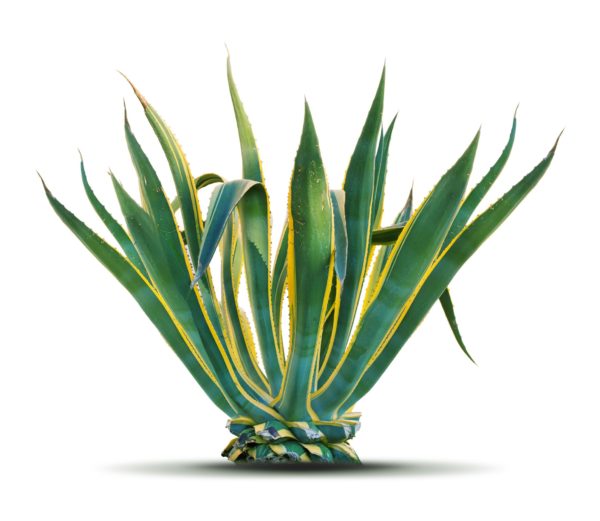 One alternative to the traditional grass lawn strategy is xeriscaping. This approach focuses on maximizing your water conservation without abandoning plants altogether. The key is using plants that have low water consumption and segregating them into pockets across your yards. These pockets of plant growth are surrounded by dry areas that may be covered with paver stones, decorative gravel paths and even some areas of regular grass. Mulch is used liberally to prevent evaporation and add a decorative element. The plants themselves are often native plants that have already adapted to the local conditions or plants imported from other arid regions, such as Australia or the Middle East.
One alternative to the traditional grass lawn strategy is xeriscaping. This approach focuses on maximizing your water conservation without abandoning plants altogether. The key is using plants that have low water consumption and segregating them into pockets across your yards. These pockets of plant growth are surrounded by dry areas that may be covered with paver stones, decorative gravel paths and even some areas of regular grass. Mulch is used liberally to prevent evaporation and add a decorative element. The plants themselves are often native plants that have already adapted to the local conditions or plants imported from other arid regions, such as Australia or the Middle East.
Pros
Xeriscaped lawns have substantially lower water needs than traditional grass lawns. Careful plant segregation lets you improve that water conservation with fine-tuned irrigation zones. On the whole, a xeriscaped yard doesn’t need as much maintenance. In some cases, two visits a year or once a season by a lawn pro is enough.
Cons
Some homeowner’s associations have rules against non-standard yards, so you’ll want to check on that before moving forward with a change. Installing a xeriscaped yard may also put you at odds with neighbors who don’t approve. Xeriscaping can be done in a DIY fashion, but it’s a much newer approach. There are consequently fewer resources available to guide you. Hence, plant segregation into irrigation zones, as well as the irrigation management itself, is technical and tricky. It’s almost as easy to kill plants with over-watering as under-watering.
Hardscaping
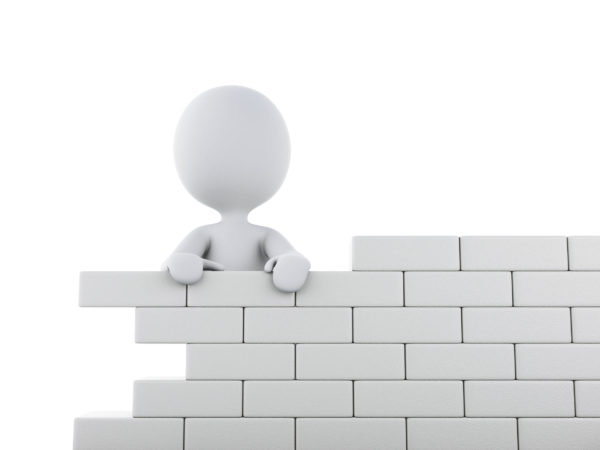 Hardscaping generally refers to the use of inanimate materials to create structures in or around a yard, such as a patio or a gravel path. In more temperate climates, it’s generally used to in tandem with the softscaping that focuses on soil and plants. In more arid climates, like Santa Clarita, it can actually replace most softscaping. This approach doesn’t mean giving up on plants, but it reduces them to a decorative element.
Hardscaping generally refers to the use of inanimate materials to create structures in or around a yard, such as a patio or a gravel path. In more temperate climates, it’s generally used to in tandem with the softscaping that focuses on soil and plants. In more arid climates, like Santa Clarita, it can actually replace most softscaping. This approach doesn’t mean giving up on plants, but it reduces them to a decorative element.
For example, you might install a brick patio over most of your back yard with built in planters and small strips of exposed soil around the edges. This as a result, lets you maintain some drainage and retain some plant life, but in an extremely controlled way. You might also opt for paver stone paths surrounded by gravel, concrete and large, decorative stones. This approach is sometimes referred to as Zeroscaping.
Pros
First of all, water use for maintaining hardscaped yards is very limited. Aside from planters or hanging plants, you shouldn’t need to water. While hardscaped yards require very little maintenance, most of which could be done with a broom or rake rather than a mower. It works well for those with a focus on backyard living. You can have outdoor ovens built as part of the process. It also provides a very stable foundation for outdoor kitchens, patio covers, and other exterior installations.
Cons
Again, your homeowner’s association may have rules that forbid such a radical transformation. Some people argue that hardscaped lawns are unattractive, which could potentially affect your home value at resale. Therefore, it’s extremely difficult to DIY an entire hardscape lawn. It often calls for heavy equipment that should only be operated by professionals.
Choosing an Approach
Choosing an approach depends on your priorities, budget, homeowner’s association and what you find attractive. If your homeowner’s association has rules against low-water approaches, or you like grass lawns, you’ll end up with the traditional approach. If there aren’t rules against it and you’re concerned with water conservation, the low water approaches are the way to go.
Plant lovers will want to opt for a xeriscaped approach. Those who can take or leave plants will probably want to take a hardscape approach. Getting your yards hardscaped or xeriscaped will cost more up front than traditional landscape work. There’s simply more labor and equipment involved. Hence, the upshot is that you’ll save on every water bill that comes in after that. Therefore, if you’re planning to stay in your home for a while, they should pay for themselves.
Our Latest Projects
Backyard Patio and Xeriscape Project
This is a local project in Santa Clarita. On this project were pouring approximately 6 yards of grey concrete. What’s most noteworthy is that the cement is surrounded by a Xeriscape landscape design complete with DG base and drought tolerant plants.
Media










